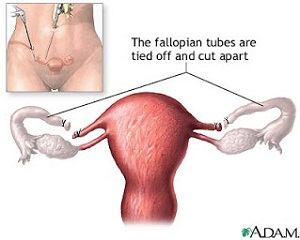With rising expectations of costs related to child care, couples are thinking of family planning more than ever. According to the Gallup poll in 2011, the ideal number of children is significantly getting smaller with couples in the United States wanting to have zero to two young ones of their own. In the poll, 59% of the men wanted zero to 2 children only as supposed to the 41% who wanted to have three or more. These results correlated with 57% of the women wanting to have zero to two children also. Subsequently, income did not alter their views since the top earners of $75,000 per year interviewed still wanted to have two children maximum.
There are a number implications in using long term contraceptives for women. Some side effects include: weight gain, bloating, and migraines – all of which are incumbent on the female. This is where sterilization comes to mind. Sterilization and contraception are part of family planning and closely related but these two can’t be interchanged. Contraception can be synonymous with birth control. It is used to prevent women from pregnancy at the moment. Some forms of contraception can be achieved through pills, condoms, diaphragms, patches, vaginal rings, and spermicides. Sterilization is a process that leaves a normal fertile person unable to produce an offspring in the future. One example of which is tubal ligation.

Tubes Tied (Blocked Fallopian Tubes) : Image via A.D.A.M
The fallopian tubes, also named uterine tubes, normally serves as the pathway for the sperm to get to the fertilized egg in the ovaries. Tubal ligation is a surgical procedure where a woman’s fallopian tubes are blocked, tied, or cut in order to stops eggs from traveling from the ovaries into the fallopian tubes for fertilization. It is considered a permanent method of sterilization and birth control. In the following years after having tubal ligation, the fallopian tubes can reform or reconnect which can cause unwanted pregnancy. But 15-20% chances that could be likely an ectopic pregnancy.
Ectopic pregnancy is a dangerous form of conception wherein the egg has falsely implanted itself outside the uterine cavity. This is classified as a maternal health emergency as this would have severe effects and ultimately cause morbidity among women if not detected. The risk of ectopic pregnancy is 12.5% for women who have had tubal ligation, which is greater risk than for those who have not had the surgery. If one should have a positive pregnancy test while having undergone tubal ligation, appropriate actions should be undertaken such as an ultrasound to confirm whether or not if it’s ectopic.
However, there’s a procedure that could reverse a tubal ligation, but it is not highly successful. The surgery is called tubal reanastomosis. Usually, it is in the physician’s discretion if they would perform it or not. Usually they would not approve of any sterilization procedure if the patient is below 25 years old. This is because statistically, women younger than the age of 30 regret having undergone tubal ligation. The candidates for tubal reanastomosis would have a complete physical before undergoing this surgery. The male partners are then asked a sperm count analysis so that the physician can rule out infertility problems.
Related post : Get pregnant after Devo Provera



 Saving...
Saving...
One Comment